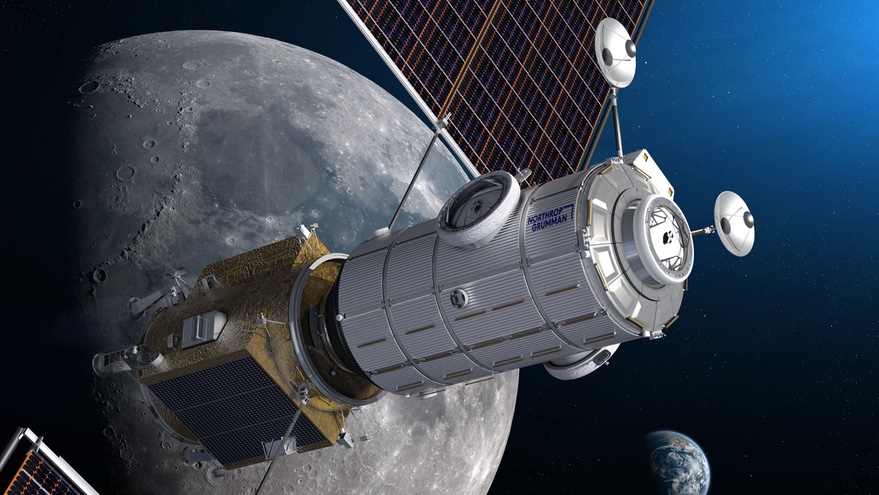Northrop Grumman has faced additional financial issues on its contract to develop a module for NASA’s lunar Gateway, resulting in total losses of $100 million for the year on that project.
In the company’s fourth quarter and full-year 2023 earnings report released on Jan. 25, it revealed a $42 million “unfavorable EAC [estimate at completion] adjustment” on its contract to construct the Habitation and Logistics Outpost (HALO) module for the Gateway. This adds to a previous $36 million charge in the second quarter, resulting in a total charge of $100 million for the year on the contract.
The company attributed the latest charge mainly to “cost growth stemming from evolving Lunar Gateway architecture and mission requirements combined with macroeconomic challenges.” This explanation mirrors what the company stated when it reported the charge in the second quarter.
Northrop was awarded a $935 million fixed-price contract from NASA in July 2021 to build the module, which is modeled after the company’s Cygnus cargo spacecraft. HALO is designed to provide initial living accommodations on the Gateway and includes several docking ports for visiting Orion spacecraft and lunar landers, as well as additional modules provided by international partners. It will launch alongside the Maxar-built Power and Propulsion Element (PPE) on a Falcon Heavy.
In July, Northrop executives indicated that they had thought they had minimized the risk of design changes by conducting initial work on HALO under cost-plus contracts before accepting a fixed-price contract to produce it.
However, in the latest earnings call, Kathy Warden, chief executive of Northrop Grumman, briefly mentioned the latest charge, as the call primarily focused on a significantly larger charge the company incurred on its contract for production of the B-21 stealth bomber. She stated that the company was implementing lessons learned from programs like HALO while taking a more cautious approach to bidding on fixed-price contracts in general.
Regarding the delay of the next two Artemis missions by nearly a year, which could separately impact the launch of the first Gateway elements, Amit Kshatriya, NASA deputy associate administrator for the Moon to Mars Program, stated, “We’re now working with our industry partners at Maxar and Northrop Grumman to review the schedule of when it makes sense to launch that before Artemis 4.”





:max_bytes(150000):strip_icc()/GettyImages-2159881840-e2e04c33a90644f9b7479e6e93e53199.jpg)







